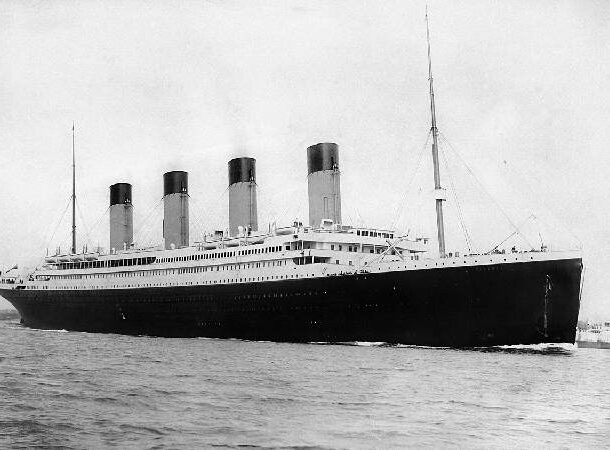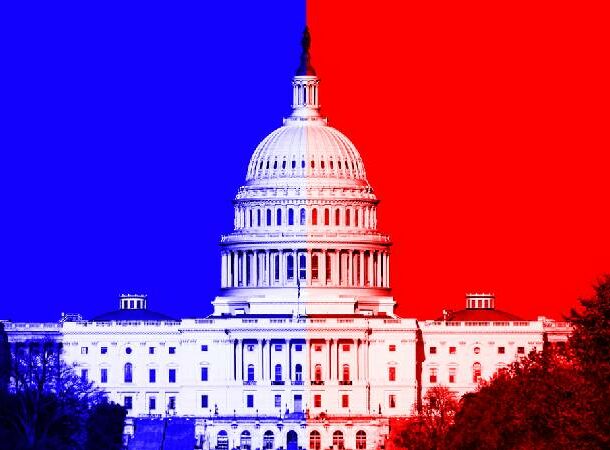It is often claimed that “individuals who fail to recall history are bound to relive it.”
While many historians discredit the notion that history repeats itself due to the specifics of each situation, it’s worth paying attention to certain historical patterns. Why is it important? for one, so that fewer people die.
Today, we look at a few situations that would have gone a lot differently if someone had paid attention in class.
Here are 25 Ways History Has Repeated Itself

Influenza & Covid

History has no shortage of pandemics: the black death, cholera, hiv/aids, influenza, etc.
In 1918, there was a wave of influenza that swept the world, killing an estimated 50 million people worldwide. Despite the high rate of infection, the public quickly became polarized.
Should we ban people from gathering for a short while?
How should we save the economy from lockdowns and so many people being infected?
Should we make people wear a mask in public?
Sound like anything you’ve heard of recently?
While science has advanced since 1918, the fierce debate over how to manage these outbreaks hasn’t changed.
Tek Sing, the Titanic, & Dona Paz

Here’s a recipe for disaster: take a large boat, fail to properly prepare it, rush to the destination, and crash into something.
In 1822, the Tek Sing crashed into a barrier reef on the way to Jakarta from China. It had so much cargo that some of it needed to be strapped to the outside of the ship’s hull. Also on board? 1,600 emigrants on their way to a new life
In 1912, the Titanic crashed into an iceberg. You know this story. Over 1,500 people lost their lives. While the ship wasn’t overloaded with cargo, it didn’t have enough lifeboats. You know, minor details.
Finally, in 1987, the Dona Paz sank in the Tablas Strait. It collided with an oil tanker, causing a massive explosion that took down both ships. The Dona Paz was carrying roughly 4,000 passengers. It was only built for 1,400.
Related: 25 Little Known Facts About The Titanic That Might Surprise You
Death Conspiracies

Could Elvis or Tupac still be alive?
Maybe.
Okay, probably not. However, it’s not unusual for conspiracies to quickly follow the death of a celebrity. It’s not long before there are “sightings” and claims that said person is still alive.
Long before television or the internet, in 1825, Alexander I of Russia died of typhus. The prevalent rumor was that he’d faked his death and become a monk named Feodor Kuzmich.
As recently as 2015, handwriting experts determined this theory could be possible after comparing writing samples.
Related: 25 Captivating Facts About Elvis Presley: The King of Rock ‘N’ Roll
The Civil Rights Movement & Black Lives Matter

See if this scenario rings any bells:
Black Americans and their allies fight to end racial discrimination and inequality. Protests are used as a platform to call attention to the need for reform.
Non-violence is emphasized and encouraged, but it doesn’t always stay that way. Is this the civil rights movement from the 50s and 60s or the current-day “black lives matter” movement?
There are obvious nuances between the two, but the parallels are hard to ignore.
Related: 25 Crazy Laws You Wouldn’t Believe America Would Still Have If It Weren’t For Civil Rights
The fight for reproductive & privacy rights

The battle for women’s rights to their own bodily autonomy has been going for decades.
The 1973 Supreme Court ruling in Roe v. Wade protected women’s right to privacy, which in turn protected women’s right to have an abortion.
Recently, Roe v. Wade was overturned in Dobbs v. Jackson, a women’s health organization case in June 2022.
While specifics over abortion and privacy laws have varied from state to state, women once again have to fight to have control over their own bodies.
Stalin and Ivan the terrible
 Image: https://www.britannica.com/biography/Ivan-the-Terrible, https://www.britannica.com/biography/Joseph-Stalin
Image: https://www.britannica.com/biography/Ivan-the-Terrible, https://www.britannica.com/biography/Joseph-Stalin In the time of Ivan the Terrible, the tsar started a group designed to oppress anyone who opposed him.
The Oprichniki, as they were called, drove out oppressors—aka terrorized the public—without rhyme or reason. They did this by riding around in black clothing with a severed dog or wolf head attached to their saddles, rounding up people, and executing them in horrific ways.
Fast forward to the time of Stalin’s rule. Stalin was an incredibly paranoid man, always on the lookout for people who were not supportive or loyal enough.
No one was safe from his paranoia, not even the top military generals and advisors. At one point, anytime after one of Stalin’s speeches, people were afraid to be the first to stop clapping, as it was considered a sign of disloyalty.
There were quite a few people who lost their lives by being the first to stop.
Blockbuster & Netflix / Nokia & Apple

In 2000, Blockbuster had the opportunity to purchase Netflix for $50 million. They turned it down quickly, seeming to think it was all a big joke.
At the time, they believed dot-com business models were unsustainable and unprofitable.
Then, a few short years later, in 2006, Nokia had the opportunity to join companies like Apple and Android to change the way mobile phones functioned.
At the time, these innovations were seen as too radical and ambitious. Nokia decided to stick with what it was doing and quickly fell out of the mobile industry spotlight.
Mass extinctions

Before we get into this one, it’s important that we define what is specifically meant by “mass extinction.”
It happens when 75% of all species on earth die off in a short period of time. By “short period of time,” I mean less than 2.8 million years.
According to scholars, there have been five mass extinctions in the past 500 million years. The thought is that we are early in the sixth.
Why? Species are going extinct at a much quicker rate.
So when could the next mass extinction happen? It’s estimated to take place in three to 22 centuries from now.
Extreme polarization of politics

In the 1950s, the governing body in the US had no room for opposition. If you didn’t agree with the current rhetoric and policies, you were obviously a vile communist.
There’s even a term for this phenomenon: “mccarthyism,” named after Senator Joseph R. McCarty, who ran a campaign against various federal and military divisions to hunt out anyone even loosely connected to the communist party.
“You know, I think his gardener knew someone with a brother in the Communist Party.”
Mccarthyism is now a term associated with defamation of character by widely publicized allegations—usually based on loose or non-existent proof.
Sound familiar? Today’s political arena is divided by sharp extremes, and you only need to listen to the media for a few minutes to hear all the allegations.
Yes, the details are quite different, but just as during the height of McCarthyism, the current pulse in the US is much more “if you disagree with me, you are evil” and a lot less “I don’t agree with your opinions.”
Labor changes

While telecommuting has been around for a while, the COVID-19 pandemic has certainly accelerated the use of virtual workspaces.
Companies are now realizing the benefits for all involved when they move things out of the office.
There are also companies that operate more on a basis of productivity and less on the basis of “you must clock in x number of hours.”
Speaking of clocking in, at the time, the start of a 40-hour work week was actually a very good and necessary thing.
Factory workers were in greater demand, and these businesses tended to, well, overwork and abuse their employees. So, while it makes less sense now, it was a large and positive innovation at the time.
Society changes based on certain needs, and when these needs change, so does how things are done.
Long Depression and Great Depression

The stock market crash of 1929 ushered in the Great Depression, which lasted ten years until 1939.
However, did you know that there was a long depression 56 years earlier? It, too, was dubbed the “Great Depression” until the 1929 crash claimed the title.
Both depressions were the result of poor financial decisions, this one dealing mainly with overinvesting in railroads. Some 18,000 banks went bankrupt.
Occupation

While all major empires and a few strong countries have a history of occupying other territories, for the United States, it hasn’t always worked out as intended.
While it starts with the idea that the use of military force is justified and will “fix” whatever place is in question, it typically ends with that place being replaced by brutal regimes.
Examples would include the occupation of Haiti from 1915 to 1934, the Dominican Republic from 1916 to 1924, and Nicaragua from 1912 to 1933.
Mass shootings

While heavy debate over gun policy rages both publicly and politically, mass shootings continue to happen all too often.
Someone mentally unstable finds easy access to a gun, kills innocent people, angry debates break out, and then… it starts all over.
Related: 25 Deadliest Mass Shootings In US History
Nativism

Throughout history, nativism, the policy of protecting the interests of native-born or established inhabitants against those of immigrants, has caused extreme harm to certain groups of people.
The most affected, were Jews, Japanese, Chinese, and Mexicans. You don’t have to pay too close attention to hear that nativism is alive and well.
Public acceptance of hate crimes

In addition to nativism and the prejudices it causes, public acceptance or apathy towards hate crimes increases significantly every so often.
Sadly, this is something we are cycling through now. While you might not realize it, there are some disturbing statistics in current times.
In 2017, there was a 17% increase in hate crimes, and there was a 99% increase in antisemitic incidents in 2018 from 2015. And that was all before the pandemic.
Genocide

When you combine public acceptance of or apathy toward hatred with certain political climates, things can get out of hand.
You might automatically think of the Holocaust, where some 11 million people died in concentration camps from execution, exhaustion, or starvation.
Or maybe it’s the Rwandan genocide in 1994, where death estimates range from 500,000 to 1 million people.
These are certainly not the only genocides in history, sadly.
The theme? Someone or a group of someones gains power and leverages hate campaigns to make it “okay” to kill people belonging to whatever group they decide they don’t like.
Related: 25 Leaders Responsible For The Worst Genocides Ever Committed
Fashion

Okay, so this one is a bit fun…And it’s still history, albeit more cultural history.
Fashion trends tend to be cyclical, too.
Bodysuits, bell bottoms, baggy, skin-tight… Even prints, accessories, and shoes have repeating trends every few decades.
Anyone waiting for JNCO jeans or McHammer pants to come back around?
Well, maybe not everything needs to cycle through again.
Discrimination in the Military

Every few years, certain members of society are restricted from serving in the military. Ethnicity, skin color, gender, sexual orientation… these are all reasons why people have been denied or harassed in the military throughout history.
Napoleon and Hitler invading russia

In 1812–1813, Napoleon attempted to invade the Russian Empire in a campaign that would later become known as the French invasion of Russia.
This major military effort was one of the largest campaigns ever undertaken by Napoleon and his Grande Armée.
He aimed to capture Moscow and force Tsar Alexander I to surrender, but in the end, his ambitions were destroyed by the Russian winter.
In 1941, Adolf Hitler made the decision to invade Russia in order to expand his Nazi empire and gain control of the strategic resources that it held.
The move was a major gamble as it would mean taking on an army much larger than Germany’s own, but he believed that rapid success could be achieved with a blitzkrieg strategy.
As time went on and Germany’s losses mounted, Hitler refused pleas from his generals to withdraw and his stubborn insistence on continuing even in spite of obvious defeat sealed Germany’s eventual downfall when Russian forces eventually pushed them back across the borders in 1944.
While it wasn’t the sole factor in either case, a major contributor to their campaigns failing was the weather. The lesson? Don’t underestimate Russian winters.
War after disaster

In periods of peace and prosperity, different political, religious, or philosophical camps are a bit more civil with each other. There are more needs being met. However, times of strife or disaster can act as kindling for the fire.
One such example is the War of the Roses, which started in 1455. Two main factions fought over the throne of England.
Then, things turned to war after socio-economic problems stemming from the Hundred Years’ War coincided with the mental instability of Henry VI and structural issues in society.
Revolutions

In many (all?) societies, there are two groups: the powerful and the powerless. Revolutions are often unavoidable—perhaps even necessary—when the dynamic shifts to one side or the other.
While the details of each are certainly different, this power struggle has led to significant revolutions: the French Revolution, the American Revolution, the Russian Revolution, etc.
Related: 25 Things About The French Revolution You Probably Overlooked
Art and culture

We talk of revolutions on a political level, but art and culture have revolutions and movements of their own.
Consider abstract expressionism, avant-garde, and baroque…The list goes on.
While each movement has distinct differences, the pattern of stimulating rise, plateau, and decadence, followed by another trend taking its place, continues over and over.
What’s interesting to note is how these artistic trends tend to reflect or mirror what’s going on in society at the time. Art influences culture, and culture influences art.
Access to information

Nowadays, we have access to seemingly endless information. There are several obvious benefits to the society because of this, but there is also no shortage of disadvantages.
We see this most significantly today in the ways that the internet and other media sources influence current politics.
Another instance of sudden access to knowledge came with the invention of the printing press.
There was the enlightenment, the creation of the scientific method, and the age of exploration. The bloodshed from the reformation may not be so great, though.
Disruptive technological advancements

In terms of the benefits and drawbacks of innovation, have you heard the term “disruptive technological advancements”?
Sometimes technology outpaces its predecessors to create something groundbreaking enough to shake up existing industries or create entirely new ones.
The printing press is certainly one example of this. Other examples include e-commerce, online news-sharing sites, GPS, and ride-sharing.
Prior to these things, there was also television, electricity, and the automobile.
Who knows what’s coming? Perhaps computer-to-brain technology?3D messages, maybe?
Innovations halting disasters

Let’s end this list on a positive note, shall we?
While history can be a bit depressing, there are certainly times when innovation can change the course of history for the better.
Think about electric cars and how that has made a positive contribution to air quality.
Before that, in mid-11th-century Europe, innovative land clearing and agricultural developments allowed a boom in production, leading to a mostly stable and prosperous 12th century.
Perhaps the next innovation will bring about growth and prosperity, too.



























